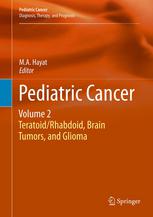

Most ebook files are in PDF format, so you can easily read them using various software such as Foxit Reader or directly on the Google Chrome browser.
Some ebook files are released by publishers in other formats such as .awz, .mobi, .epub, .fb2, etc. You may need to install specific software to read these formats on mobile/PC, such as Calibre.
Please read the tutorial at this link: https://ebookbell.com/faq
We offer FREE conversion to the popular formats you request; however, this may take some time. Therefore, right after payment, please email us, and we will try to provide the service as quickly as possible.
For some exceptional file formats or broken links (if any), please refrain from opening any disputes. Instead, email us first, and we will try to assist within a maximum of 6 hours.
EbookBell Team

4.4
92 reviewsA general introduction to the principles of diagnosis and treatment of children with brain tumors is presented. Molecular characterization of solid tumors is also presented. Molecular pathways provide putative targets for new therapies. High resolution magic spinning NMR spectroscopy is explained, which is used to determine metabolic profiles for small pieces of intact tissue and whole cells in culture. The differences between adult and pediatric brain tumors are outlined. It is emphasized that pediatric low-grade gliomas need lower doses of antidrugs such as cisplatin/etoposide. It is explained that tumor suppressor genes and oncogenes play a crucial role in the development and progression of human malignancies, including those in children. Neurofibromatosis type-1 is a common genetic disorder with a high prevalence in CNS abnormalities including tumors in children; which is discussed in detail. Various neuroradiological imaging modalities in children with leukemia are detailed. Also are detailed results of clinical trials in pediatric brain tumors, such as medulloblastoma, ependymoma, craniopharyngioma, low-grade glioma, high-grade glioma, brainstem glioma, and germ cell tumors, using radiotherapy. Considering the clinical importance of epilepsy in the primary brain tumors in children, its symptoms, diagnosis, and treatments (surgery and antiepileptic drugs) are discussed.